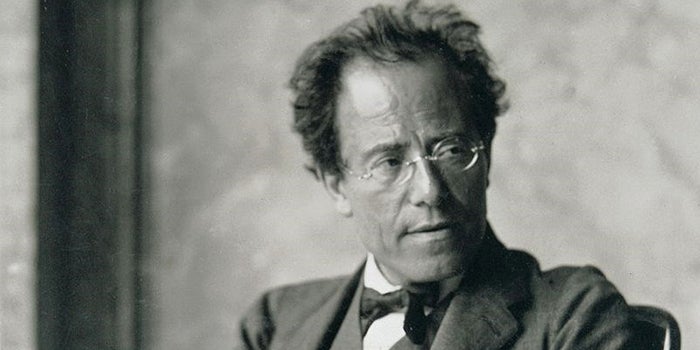Mahler’s First Symphony: Finding Its Final Form

Brahms often comes to mind as the composer who took a long time to finish his First Symphony, yet other composers may have shared his trepidation and procrastination while composing their first symphonies. Mahler revisited his First Symphony most of his career, producing its first version when he was in his late 20s and its final publication in the last decade of his life. He was never satisfied, to say the least, and it took decades for his premiere symphony to arrive at the form we know today.
Mahler first composed a “Symphonic Poem in Two Parts” in 1888, which premiered in Budapest. It was five movements divided into two large parts. One major difference is the absence of the famous viola passage that initiates the transition to the grand finale. Have a listen to the original last (fifth) movement: (starting at 14:40, giving way to the explosive finale at 16:54):
Here is the version we know today. The sudden orchestral clash is replaced with an abrupt entrance of the violas. This transitions the work to its final section, rather than immediately starting it. For both the violas and the conductor, the transition is one of the trickiest entrances in the repertoire! (15:20)
Recognize this movement? You probably won’t—because it was removed entirely. Mahler left this movement out when re-modeling the symphony to its final four-movement form. He entitled it “Blumine.”
Mahler produced a revision of the work in 1893, which premiered in Hamburg. The word “Symphonic Poem” was replaced with “Symphony,” but he still retained all five movements, divided into two grand parts. This was also the first appearance of the word “Titan” in the title, which was inspired by a notable German novel. Possibly the most noticeable difference of this version is the start of the fourth movement (or third movement in today’s version). In the 1893 version, the iconic bass solo is not actually a solo, but rather a cello accompanies the bass:
Now the movement as we know it today—the awkwardly exposed, but sonorous, bass solo:
When the work finally reached its final form, Mahler rejected all titles, both of the whole symphony and each individual movement—including “Titan.” History has honored the composer’s decisions for the movements but not the symphony. The “Titan Symphony,” as we call it today, is technically incorrect, but the symphony never escaped this label.
Some elements, however, suggest a program still remained. For example, a melody that first appeared in an early masterwork, the Songs of a Wayfarer, was retained as a main theme. Here is the tune as it first appears in the early song cycle for voice and orchestra:
Now listen to the main theme of the first movement of Mahler’s First Symphony. Sound familiar?
It is not uncommon for a work of this magnitude to undergo all this revising and indecisiveness. Overall, we can connect some dots to see Mahler’s process and self-criticism, but ultimately, we do not know how Mahler truly felt about this work because he was always changing his mind about it. What we do know is composing anything on such a grand scale—at such a young age—takes time. The process above is evident that Mahler, through constant revisions of orchestration and material, found the right resting place for his very first symphony.
Hear Mahler’s First Symphony alongside Brahms’ Violin Concerto and Bernstein’s Overture to Candide with the NJSO June 7–10 in Newark and Red Bank.